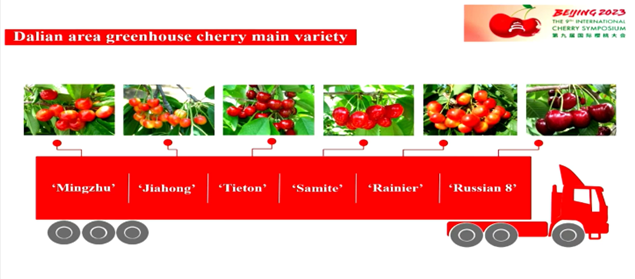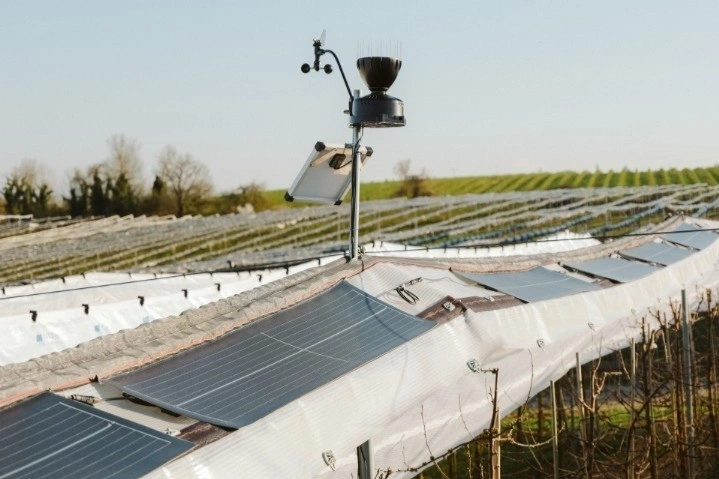Jacob Marsal, research director at Viveros Ebro, provides a comprehensive overview of the varietal program, particularly for cherries, explains the main customer demands, and gives an overview of the stone fruit season in the Ribera d'Ebre region in this interview.
As a nursery company, what do your customers ask for?
The tone remains consistent. It's always, as much as possible, about finding a variety that improves upon existing ones. In other words, whenever a farmer needs to renew a crop, they will always seek to improve the old variety with a better one. Therefore, it's always very important to have tested and contrasted the new varieties under the same conditions as the old ones to determine their improvement.
You are the successor to the business, with over 50 years of experience, at Viveros Ebro. Did you imagine this?
We usually don't take that into account, but the truth is we hope to be around for another 50 years, or more. We haven't lost the essence of a family business made up of an excellent team of professionals with a wealth of knowledge and research that we transmit to our customers.
How do you approach the future?
We must always seek to improve all aspects of plant material in the nursery, taking into account the varieties, rootstocks, with recommended management systems, and to optimize results.
As a nurseryman, what innovations are you introducing, and what projects are you involved in for the future?
Thanks to the various varietal programs we collaborate with, we offer a whole range of new varieties of different crops, from stone fruits to pome fruits and nuts.
What are these programs, and can you comment on them?
We work, among others, with IPS, Summerland, and SMS varieties, which we test year after year in our varietal trial fields.
Among the new crosses, alongside traditional ones, there are novelties such as:
- IPS-Zaiguer's Royal Apache cherry, harvested from May 9;
- The self-fertile SMS-416 with a large caliber characterized by a long peduncle and a pendulous tree posture that greatly facilitates harvesting;
- EPICK-16, also from the SMS program but in Spain, owned by Hortifrut, highly productive, self-fertile, with over 49 days of cold storage, very promising also for Chilean growers who require up to 30 days of shipping;
- SMS-33, round, large, sweet;
- SMS-426 with great flavor, both from the Santina season.
There are also novelties for late cherries from Canadian programs Summerland and Zaiguer California, both well suited to low dormancy zones (350-500h).
And in other stone fruits?
There are many new peaches (Aspen white, Royal Dixie), nectarines (June Glory, Honey Sugar), plums (Crimson Glo, Tasty Sweet), and apricots (Prialina, Rubely) from IPS, which are yielding excellent results in experimental fields.
What does having your own experimental field mean for Viveros Ebro?
For us, it's the foundation for testing the good performance of new varieties. We can say that having an experimental field is fundamental for Viveros Ebro.
You also produce cherries: what are the characteristics of Ribera d'Ebre cherries compared to other competing production areas?
Ribera d'Ebre cherries, and by extension all fruit from Ribera d'Ebre, have always been characterized by their earliness, quality, and great tradition of stone fruit production.
Speaking of competing areas, is the origin of the fruit appreciated by the customer?
I believe that, given the current market situation, the value of a fruit is entirely relative to the quantity of that fruit on the market; in other words, if there's a shortage of product, the price is very good, and if, instead, there's an excess of product, the price is not as good. It's in this situation that a good evaluation of your fruit by the customer can offer better selling conditions as a reward.
Returning to the region's stone fruits, a first look at the season.
I would describe the year as rather unusual. A season marked by an irregular dormant period, with peaks of heat leading to irregular flowering and not massive fruit set, but since there hasn't been much fruit on the tree, the quality seems to be excellent so far.
Source: Valencia Fruits
Image: Pixabay
Cherry Times - All rights reserved












